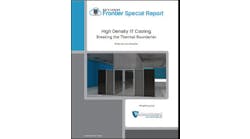The Truth Behind the Top 5 OEM Maintenance Myths
Which is why managing the performance of systems is so critical to protecting that investment.
Choosing to purchase equipment from an original equipment manufacturer (OEM) might be smooth sailing at the beginning. But as post-warranty, end of life (EOL) and end of service life (EOSL) creeps in, you may encounter rough seas.
Buying brand-new equipment might seem like your only option, but it’s a myth and not the only one.
Myth 1: Buy New to Avoid Expensive Warranty Support
The OEM is in the business of selling hardware. The manufacturers are focused on influencing you to purchase new equipment instead of holding on to older gear that still meets demands.
This may explain why OEM post-warranty maintenance costs spike after your three-year contract runs its course. Due to the inflated support costs, buying new may seem like a financially sound choice. But when you compare support costs for the same services with non-OEMs, you’ll see another option.
According to Forrester, 80% of people are unaware of the alternatives to OEM support. One of those alternatives is third-party maintenance (TPM).
It’s possible to keep your current environment an additional seven to ten years by making the switch to TPM. That’s because server, storage and network equipment is built to last. Despite what the OEM says, your equipment continues to perform well beyond the OEM-suggested life cycle.
To avoid choosing between high data center maintenance costs or an even higher hardware refresh price, you owe it to yourself to consider the alternatives.
Myth 2: Upgrade When Hardware Reaches EOL or EOSL
As equipment reaches EOL or EOSL, the OEM encourages you to upgrade because that’s the company’s business model.
EOL and EOSL aren’t as ominous as they sound. Manufacturers use these terms to indicate equipment life cycle stages and the types of support offered.
Although EOL (3-6 years) sounds bleak, it means the OEM no longer markets, sells nor plans to upgrade the equipment. Whereas EOSL (6-12+ years) means the manufacturer no longer offers post-warranty support or equipment updates.
FACT: USEFUL LIFE OF HARDWARE IS LONGER THAN OEM DESIGNATION
While the OEM may caution you about limited parts availability for EOL and EOSL equipment, the fact is, TPM providers have access to reliable and high-quality parts to keep you up and running.
Failure rates aren’t always what they seem. When equipment reaches EOL or EOSL, many assume there will be an increase in failures, but that assumption is false. We talk more about failure rates and the Bathtub Curve in another Data Center Frontier article.
Most server, storage, and network equipment is stable over time. With the proper preventive maintenance, your hardware can last far longer than the OEM may suggest.
Bear in mind, there are always valid reasons to proceed with a hardware refresh, including software and hardware compatibility, performance capacity and hardware compatibility between devices.
Myth 3: Software Updates Can Only Be Installed by OEM
Software concerns loom large for most data center admins. Some fear they’ll lose access to patches or software upgrades if they move away from the OEM to a TPM provider.
FACT: PROVIDERS CAN APPLY UPDATES
In some cases, you can still legally obtain updates for your storage environment. If not, a TPM provider will work with you to determine the need, impact and accessibility of the updates along with possible solutions.
There may be no real benefit to having the latest software, firmware or microcode. Many releases are solely for the ability to use new features or hardware. If your environment is stable and not overly dynamic, most updates are a moot point.
TPM engineers also stay informed of known issues and can be just as effective—or sometimes more so—at handling tough problems.
Myth 4: OEM Support is Always Superior
The general belief is that OEM engineers are the only people qualified to provide support for their products. After all, they work for the company that built them; they should be able to solve the most complex of problems.
FACT: EXPERTISE IS NOT GUARANTEED
Just because an engineer works for the OEM, it doesn’t automatically reflect a greater level of knowledge or skill. This concept is similar to car dealerships and auto repair shops. It’s common for many repair shops to offer the same level of service—if not better and more affordable—as the dealership. Taking your car to the dealership for a repair doesn’t guarantee you will receive an immediate fix.
Reputable TPM engineers have extensive internal resources and are empowered to solve a broader range of issues that some OEM engineers aren’t authorized to fix.
Myth 5: An OEM Provides the Best Service
Since OEMs are busy prioritizing the development and sale of new equipment, they tend to invest less in support training and resources. And the support they do provide typically comes at a high cost.
FACT: THIRD-PARTY SUPPORT TYPICALLY PROVIDES BETTER SERVICE
The substantial cost difference between OEM and TPM support is only one part of the comparison.
While OEMs tend to get bogged down with the massive amount of service requests and phone calls, a TPM solution has local staff dedicated to your specific needs. The result is more uptime for your data center.
You need service that translates into less wasted time, more resources and fewer headaches so you can meet your changing demands.
OEM Maintenance is Not Your Only Option
Don’t buy into the mindset that there is only one option for your data center needs. TPM provides you with a practical and beneficial alternative to standard OEM solutions.
Before signing for a brand-new storage equipment upgrade, base your decision on knowledge and analysis—instead of myths.
Chad Peters is Director of Infrastructure Solutions for Service Express, a global data center solutions provider that helps IT teams control costs, optimize infrastructure strategies and automate support.








